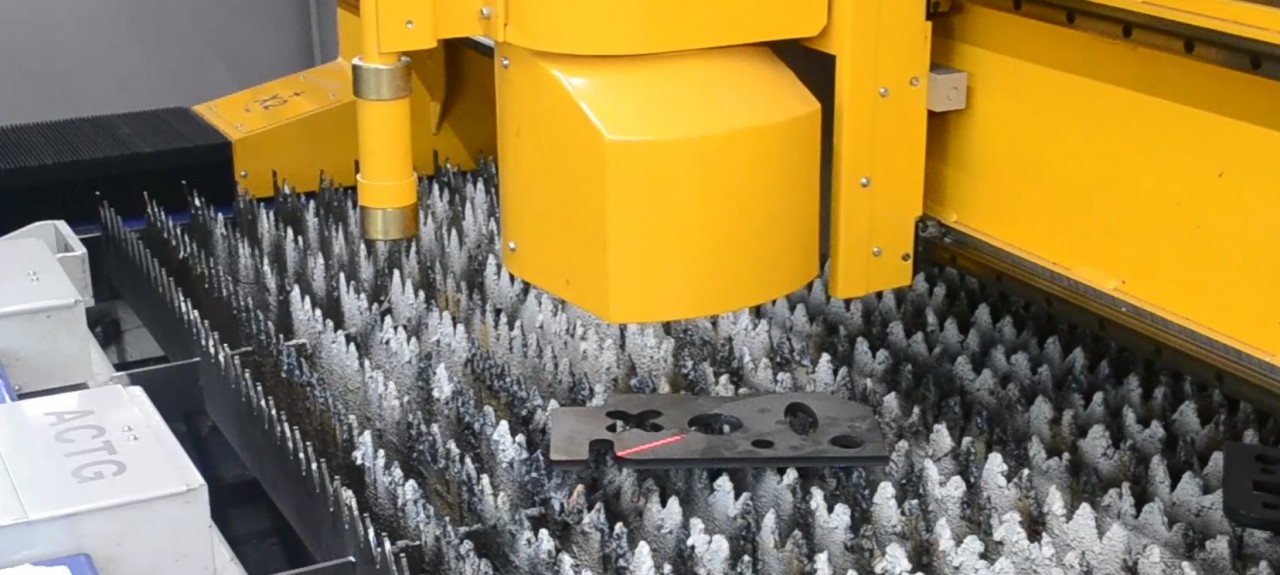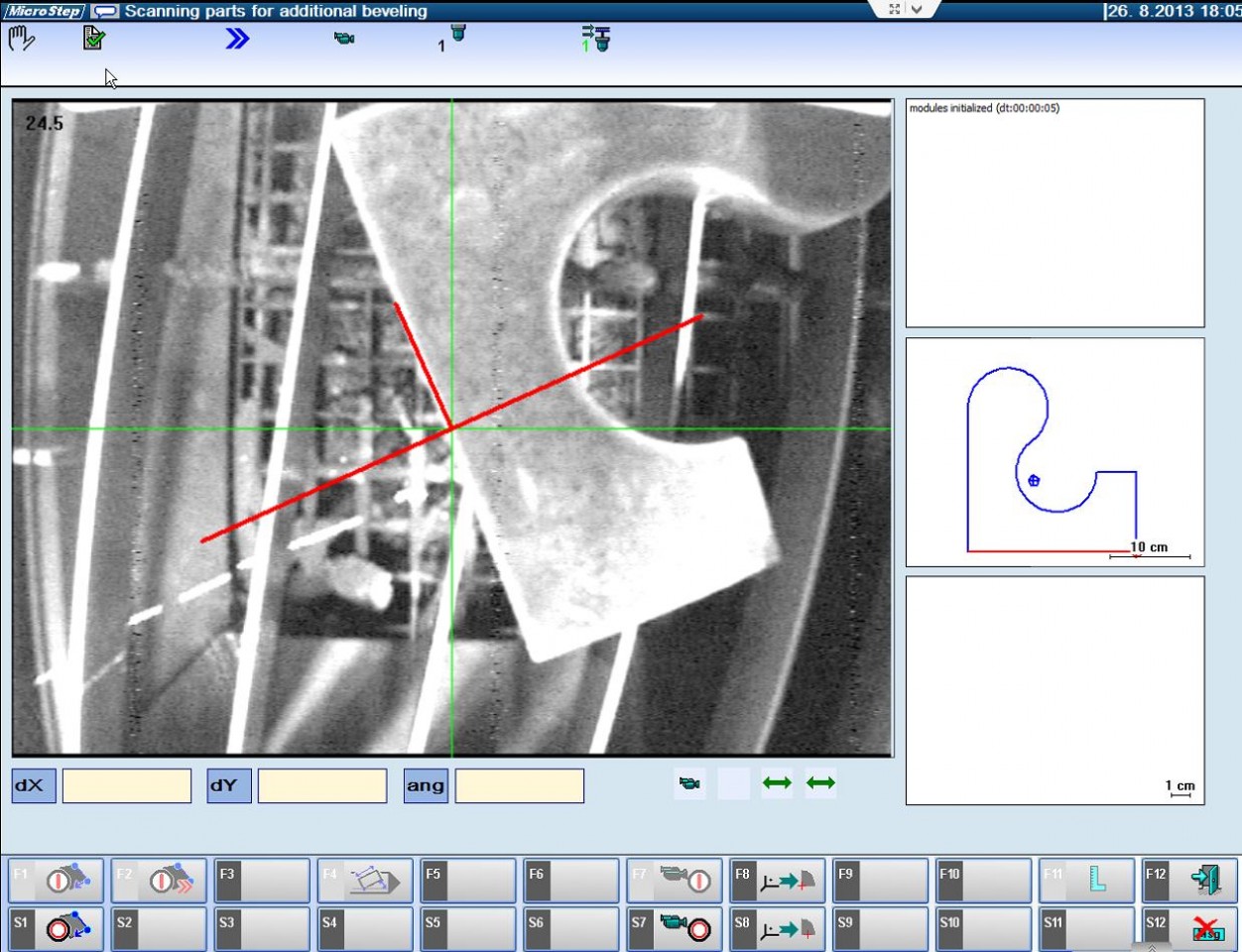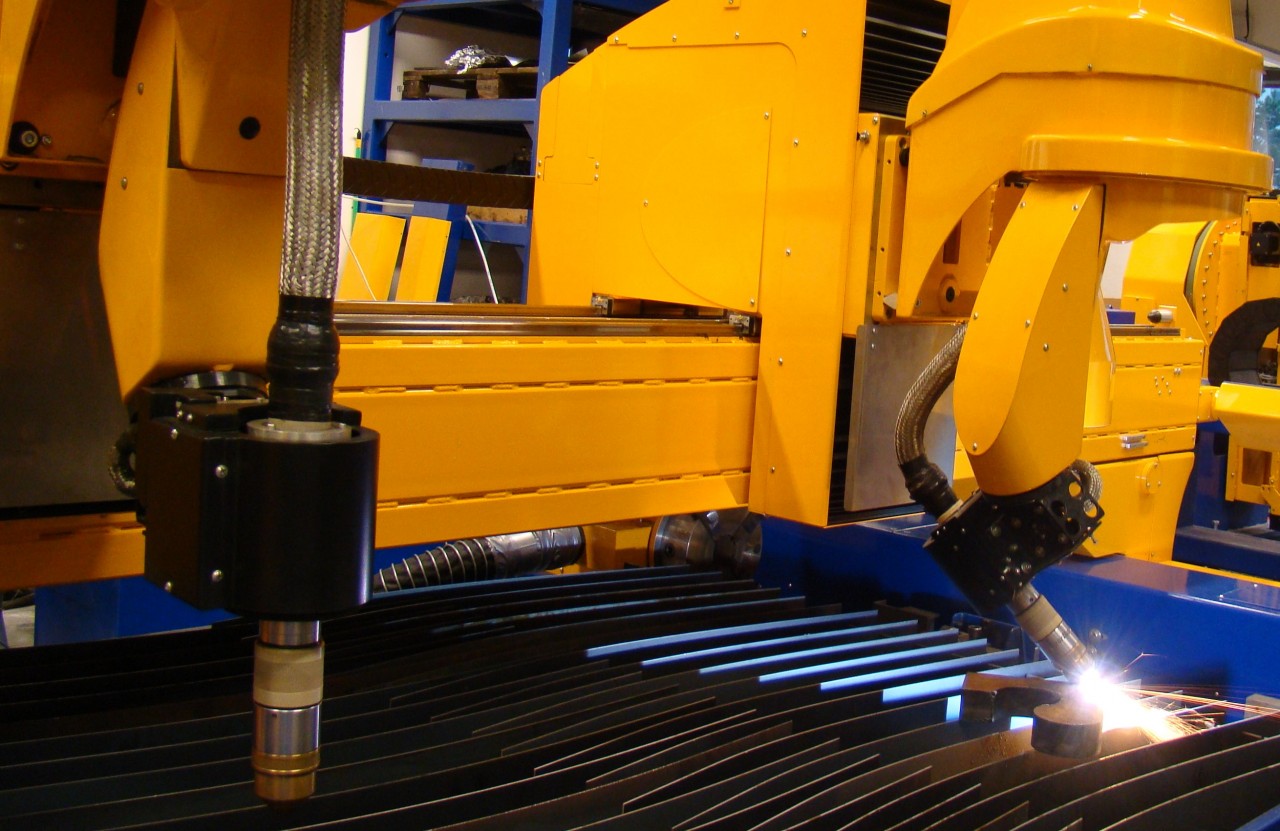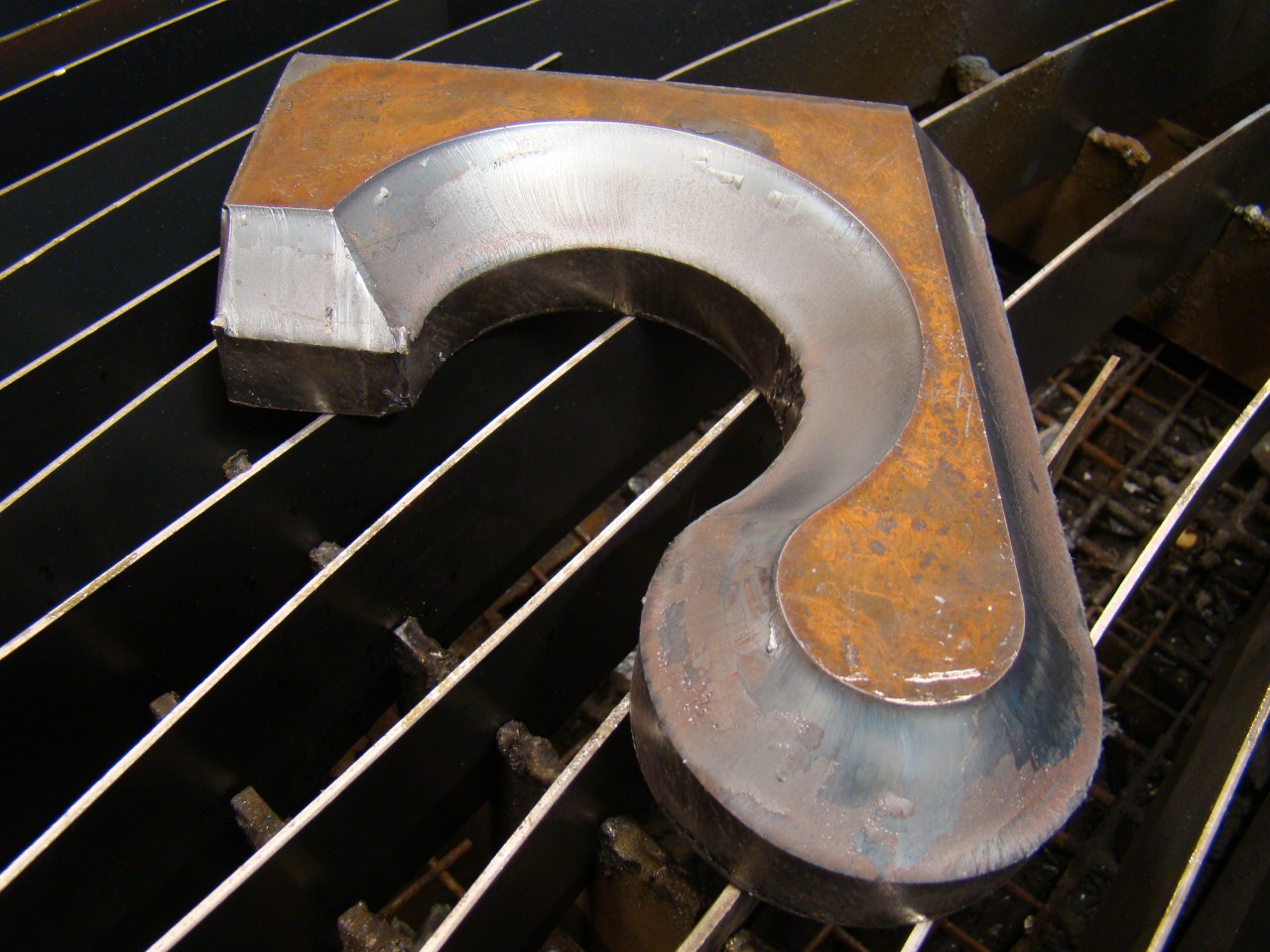Robots are widely regarded as the solution of choice when it comes to weld preparation and bevel cutting on already cut parts. With ABP (short for Additional Beveling Process) MicroStep introduced an efficient way of precise subsequent beveling that has proven to be highly efficient since it doesn´t require a separate machine to do the job, and the user also saves time for moving the parts for beveling to another workplace. All is done conveniently by utilizing the same cutting head and CAM software like for direct beveling.
Subsequent weld preparation is a standard way of processing cut parts in many areas of the metalworking industry. Manufacturers of machinery and materials for power plants, turbines, pumps, mining equipment and others often work with very large steel thicknesses, so the parts cannot be cut with bevels directly – either due to technology limitations or because it would mean a significant waste of material.
Adding of bevels made simpler
In case of big material thicknesses, automated weld preparation on parts has traditionally been a two-stage process. First, the desired contour was cut on a conventional cutting machine with a straight tool, e.g. by plasma or oxyfuel. Then, the part was taken out by the operator and moved to another workplace, where it was processed by a robot – in order to successfully add bevels, the part needed to be placed precisely on the workbench, and there needed to be prepared a separate cutting program for the robot for adding bevels.
“The initial question we asked ourselves was why you should require a robot for the subsequent weld preparation in the first place,” explains Alexander Varga, development chief and co-founder of MicroStep. “Our cutting machines have all the means for achieving highly precise bevel cuts.”
With this premise in mind, MicroStep utilized its long-term experiences in bevel cutting and process control for developing the ABP process – a technology that involves laser scanning of pre-cut parts along with software tools enabling user-friendly programming of additional bevels in a standard CAM environment. The process allows to cut additional bevels with the same bevel head like direct bevels, in a quality that doesn´t require further post-processing or additional machining steps – the parts can be used for welding straight away after ABP.
Enabled for all cutting technologies
To enable a MicroStep machine to use the additional beveling feature, the machine has to be equipped with one of MicroStep’s bevel cutting tool stations and an additional scanner unit. The scanner can be attached to the bevel head from the side, integrated in the torch holder or mounted on a separate tool station – depending on the particular machine configuration and desired application.
ABP scanner determining the exact position of a part placed on a random spot on the cutting table.
The process then unfolds as follows: First, a 2D drawing of the pre-cut part is imported into MicroStep’s CAM software Asper®. The machine operator defines the required bevels in Asper's user interface. The system then generates a cutting program for additional beveling. To find the exact position of the part on the cutting table, the machine will use the ABP scanner. During the scanning process, the real contour of the part is compared with its drawing and if slight differences are detected (a real part is hardly ever completely accurate), the system will align the cutting program with the real shape to achieve the most accurate cutting result possible. After the starting point of cutting is verified, the cutting process begins. The process allows to cut V, Y, X and K bevels (whereby for K and X cuts the part needs to be turned and scanned again after the first cutting round is completed). Obviously, the technology allows to scan and process parts made with completely different technologies – for example, thick parts cut with oxyfuel can be subsequently beveled by plasma, or parts pre-cut with plasma can be cut with ABP by fiber laser. Thanks to MicroStep's unified bevel cutting equipment and its easy setup via the patented ACTG® technology, the ABP process is fast, reliable and easily applicable to all cutting technologies – plasma, laser, waterjet as well as oxyfuel. In order to enable a MicroStep machine to use the additional beveling function, the machine has to be equipped with one of MicroStep’s bevel cutting tool stations and an additional scanner unit. The unit can be attached to the bevel bead or mounted on a separate tool station – depending on the particular machine configuration and desired application.
During the scanning process, the real contour of the part is compared with its ideal shape (drawing).
Advantages of ABP
Compared to additional processing of pre-cut parts with a robot, the patented ABP technology offers several clear advantages: the complete process (2D cutting and additional beveling) can be done with the same machine – this saves space in production and, above all, the time that is otherwise spent with part manipulation. In addition, the cost of adding a laser scanner to a MicroStep cutting machine is significantly lower than the investment in a separate, dedicated robotic workplace. On the other hand, cutting results that can be achieved on a gantry-type machine are more precise due to the generally higher rigidity of the cutting machine.
With beveling technology from MicroStep, V-, Y-, and (under certain conditions) also X- and K-cuts can be added to already pre-cut parts.
ABP for stainless steel and aluminium
ABP with plasma can be used for not only mild steel parts but also for stainless steel or aluminium. As an example, the 15 mm thick stainless steel part pictured above was beveled in a 130 A plasma cutting process.
Thanks to high rigidity of the cutting machine, the cutting results are finer and more precise than with a robot.
”The dross is easy to remove. The technology provides impressive results. Especially with stainless steel, it saves a lot of material and also handling costs,” says Alexander Varga, development chief of MicroStep. “For bigger thicknesses, the material savings achievable thanks to ABP are very attractive.”
Close-up view of a cut part with added bevels.